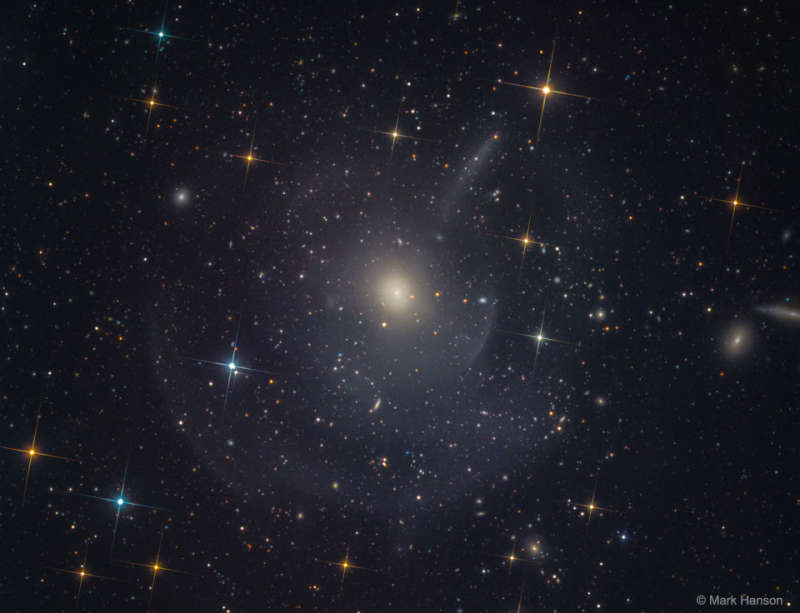Credit & Copyright: Mark Hanson
Explanation:
Can you see them?
This famous
Messier object
M89,
a seemingly simple
elliptical galaxy,
is surrounded by faint shells and plumes.
The cause of the shells is currently unknown, but possibly
tidal tails related to
debris left over from absorbing numerous small galaxies in the past billion years.
Alternatively the shells may be like ripples in a pond,
where a recent collision with another large galaxy created
density
waves that ripple through this galactic giant.
Regardless of the actual cause, the
featured image
highlights the increasing consensus that at least some elliptical
galaxies
have formed in the recent past, and that the outer halos of most
large galaxies are not really smooth
but have
complexities
induced by frequent interactions with -- and accretions of --
smaller nearby galaxies.
The halo of our own
Milky Way Galaxy
is one example of such
unexpected complexity.
M89 is a member of the nearby
Virgo cluster of
galaxies
which lies about 50 million
light
years distant.
Follow APOD on:
Facebook,
Google Plus,
Instagram, or
Twitter
1999 2000 2001 2002 2003 2004 2005 2006 2007 2008 2009 2010 2011 2012 2013 2014 2015 2016 2017 2018 2019 2020 2021 2022 2023 2024 2025 |
Январь Февраль Март Апрель Май Июнь Июль Август Сентябрь Октябрь Ноябрь Декабрь |
NASA Web Site Statements, Warnings, and Disclaimers
NASA Official: Jay Norris. Specific rights apply.
A service of: LHEA at NASA / GSFC
& Michigan Tech. U.
|
Публикации с ключевыми словами:
Elliptical Galaxy - эллиптическая галактика
Публикации со словами: Elliptical Galaxy - эллиптическая галактика | |
См. также:
Все публикации на ту же тему >> | |
